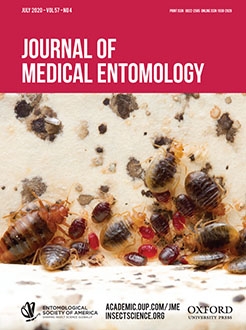Much of the bluetongue (BT) and epizootic hemorrhagic disease (EHD) research in North America focuses on white-tail deer and Culicoides sonorensis (Wirth & Jones) (Diptera: Ceratopogonidae), though several other biting midge species have been suggested as vectors. Culicoides stellifer (Coquillett) has been associated with hosts susceptible to hemorrhagic disease (HD), and more recently, specimens from Florida have tested positive for EHD and BT viral RNA. If C. stellifer is acting as a vector, this could have an impact on the distribution of HD in North America.To determine if gene flow is occurring across the range of C. stellifer within the southeast United States, a mitochondrial haplotype analysis was performed using the COI gene. Our haplotype network showed no population structure in C. stellifer from Florida,Texas, and South Carolina, as the overall genetic divergence between these sites was equal to the genetic divergence within each.We also compared these haplotypes to published sequences of C. stellifer collected in Ontario, Canada. Surprisingly, the genetic diversity of the flies from Ontario was two times greater than what was observed between the southeast U.S. collection sites.This considerable divergence could be evidence of a cryptic species. A better understanding of the connectivity between C. stellifer populations across all of North America will give insight into the distribution of HD. Our results show that gene flow is occurring between sites in the southeastern United States and potentially throughout the eastern distribution of the species.
How to translate text using browser tools
26 February 2020
Genetic Diversity of Culicoides stellifer (Diptera: Ceratopogonidae) in the Southeastern United States Compared With Sequences From Ontario, Canada
Phillip Shults,
Alphina Ho,
Estelle M. Martin,
Bethany L. McGregor,
Edward L. Vargo
ACCESS THE FULL ARTICLE
It is not available for individual sale.
This article is only available to subscribers.
It is not available for individual sale.
It is not available for individual sale.

Journal of Medical Entomology
Vol. 57 • No. 4
July 2020
Vol. 57 • No. 4
July 2020
biting midge
haplotype network
hemorrhagic disease
population genetics
vector




